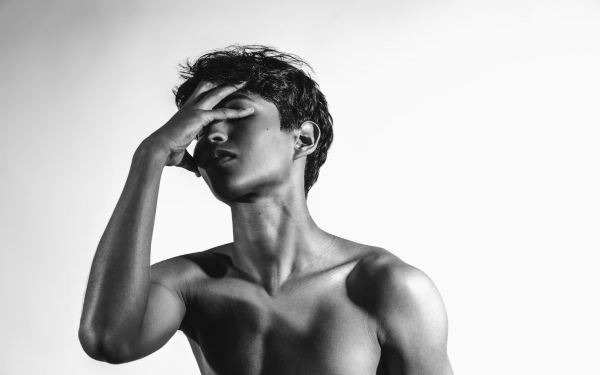Bottoms: Queer representation and stepping into personhood
Emma Seligman and Rachel Sennott’s new project Bottoms is a breath of fresh air for queer representation on the big screen
In their new teen-comedy, Bottoms, Emma Seligman and Rachel Sennott, of Shiva Baby fame, crafted characters we’ve almost never seen before: lesbians who are hilarious and, above all, superficial.
Bottoms didn’t pique the interest of any of my friend’s when I went to see the film on the first Tuesday of its release. I felt as if their lack of desire would perhaps reflect the overall anticipation as well. However, to my surprise, I was forced to sit in the very front row as every other seat in the theatre was sold out.
When I looked up at the slightly distorted faces of Rachel Sennott and Ayo Edebiri, laughing in echo with the rest of the theatre, I understood why the film drew such a large crowd on a weekday showing.
Bottoms follows two lesbian leads: PJ, played by Sennott, and Josie, played by Edebiri, who decide to form a fight club in their high school in an attempt to impress their respective cheerleader crushes.
While Bottoms portrays the two leads as “losers” who rise to the top of the social ladder as their club gains popularity, PJ and Josie never feel like the tragic martyr queer people are so often depicted as.
Queer stories have been slowly entering movie theatres, with this year seeing an unusually high number of lighthearted queer films like Red, White and Royal Blue and Theatre Camp, as well as Bottoms. With this amount of releases, it can be easy to forget how far queer representation has come in recent years.
Indeed, Hollywood refused to allow mentions of homosexuality in films until the 1960s with the dissolution of the Production Code.
In 1934, following many high-profile controversies and fearing censorship by governments and boycotted by members of the church, Hollywood opted for the road of self-censorship, enforcing a set of “moral guidelines” their films had to follow.
The core principles of the code were that films could not depict situations that would “lower the moral standards of those who see it.” The goal was to avoid audiences sympathizing with “crime, wrongdoing, evil, or sin.”
The code didn’t allow for homosexual representation of any kind, as it was considered “sex perversion.” Films based on novels exploring queer themes had to be scrubbed of all mentions—regardless of how innocuous—and foreign films dealing with queer themes were censored before release.
Such was the case for the 1951 French lesbian film Olivia, also known as The Pit of Loneliness, which saw all scenes dealing or alluding to lesbianism erased.
The sex perversion clause was amended in 1961 to say that “homosexuality and other sexual aberrations may now be treated with care, discretion and restraint,” and the code was fully supplanted by the late 1960s.
While some films of the era have been interpreted as having gay subtext, no Hollywood films portrayed unambiguous queer relationships until much after the restriction on sex clause was amended in 1961.
While it’s safe to say that Bottoms does not make use of much discretion or restraint, it does brilliantly show off Seligman, Sennott and Edebiri’s comedy chops as well as the audience's desire for more queer romantic comedies.
Watching this film felt extremely refreshing because time and time again I’ve seen queer characters being reduced to stereotypes while their stories are seeped in tragedy.
Especially when looking at the small screen, the few gay characters present have a history of being killed at an alarming rate, usually to further the plotlines of straight characters. Especially troubling in primarily straight casts, this practice furthers the idea of queer people as disposable, as if their existence matters only for shock value.
In 2016, a year that brought the criticism of the ‘bury your gays’ trope to mainstream media, ten of the 35 sapphic characters on television were killed off. The death of Lexa in the CW’s The 100 hit fans especially hard and is considered the catalyst for the wave of backlash.
While homophobia and transphobia are tragically on the rise, reducing queer characters to symbols of tragedy strips them of personhood and reinforces the false narrative that happiness and acceptance is impossible.
Films like Bottoms, showcasing a diverse cast of characters who are allowed to indulge in the more frivolous things most teenagers care about—like dating, looks, and finding their place in the crazy world of high school politics—is revolutionary. It allows for queer people on screen to step into normalcy, to move away from being just a symbol and start being a three-dimensional character. This shift allowed queer people to be seen in mainstream media as they are—people.



_600_375_90_s_c1.jpg)

_1__600_375_90_s_c1.jpg)
